Touch faucet - almost artificial intelligence
Most of us are accustomed to the fact that the mixer in the house necessarily has valves or a handle for regulating the temperature and pressure of the water. However, at home more interesting devices may well be installed in which there are no moving parts outside, and a special sensor is responsible for the water supply, which opens the valve inside the mixer.
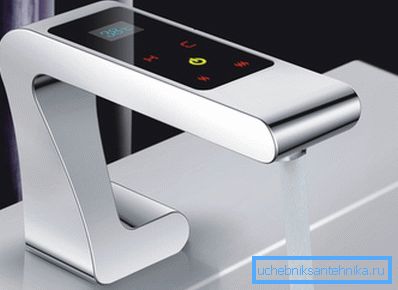
Features of the use of touch mixers
The design of such mixers is not particularly complex - a touch sensor is added to the standard design on a water tap, and a valve opening / closing mechanism is placed inside the mixer body.
This solution has several advantages:
- in crowded places (educational institutions, catering, etc.) installation of sensor devices will extend the life of the device;
- in the same category of institutions, sensory models will also contribute to hygiene, because a person does not have to come into contact with the surface of the plumbing;
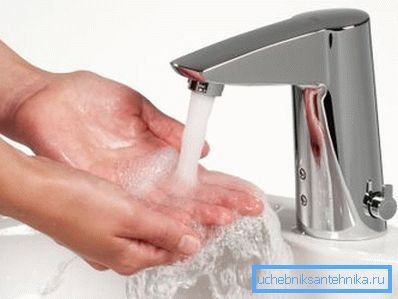
- water savings will be achieved, once a person removes his hands from the mixer, the flow of fluid immediately stops. If we consider the number of visitors per day, the savings on this will be substantial;

- at home such mixers allow you to adjust the temperature 1 time, This feature is especially useful in families with small children, you can not be afraid that the child will burn;
- you can not worry about the fact that someone from the home left the tap on, in the case of the smart sink faucet, this is simply not possible.
Of course, it was not without drawbacks as well; touch mixers are suitable not for the whole house, but only for some premises:
- for example, for the kitchen such an option would definitely be superfluous. Firstly, in order to get water into the sink, you will have to constantly hold your hand at the sensor, and secondly, you will need to constantly switch the temperature on the mixer, which is also not very convenient. Therefore, in the kitchen, a classic version or model with a piezo element will be appropriate;
- Sometimes the geometry of the sink and the lighting can play a cruel joke and the sensor will turn on the water supply in the absence of a person.
Note! In the bathroom to install such a device is generally contraindicated, otherwise in order to draw water into it, you will have to turn off the sensor, that is, turn the faucet into a normal one. This is not very logical, especially given the higher cost of the touch analog.
Read more about the device and the principle of operation of sensor cranes
Externally, the touch mixer looks unusual - there are no usual gates and handles. In order for water to go, a hand must be brought into the sensor's area of operation (true for models with induction sensors). In addition to the "smart" mixer in the house with the same effect can be used sensor nozzle on the tap to save water.
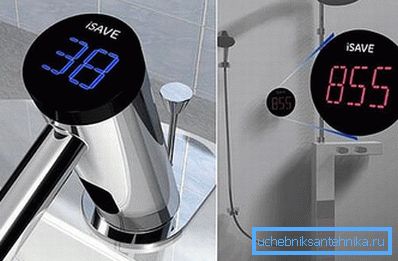
How it works
A compact induction sensor built into the mixer generates an induction field under the faucet. As soon as any part of the human body enters this field, it changes and this is a signal to supply water.
Note! For the operation of the sensor of this type need an energy source. Such devices consume so little energy that even a few standard batteries will last for several months of work. The electrical connection options are not so safe, so they are not very suitable for the home.
A miniature electromagnet and a valve attached to the core are located in the mixer itself. As soon as the induction field changes, generated by the sensor, a current begins to flow through the electromagnet - the core with the valve rises and water flows into the faucet. As soon as the voltage disappears, the valve immediately stops the flow of water.
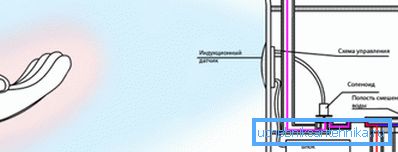
Of the design features, it can be noted that the cold and hot water is mixed before the valve, so it is advisable to use a check valve at the outlet in order to insure against reverse flow of water.
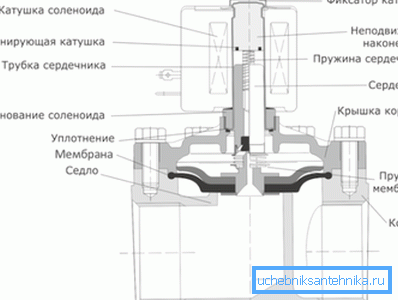
Note! When you buy a water-saving nozzle touch on the faucet, on the check valves also do not forget. Otherwise, there may be unpleasant surprises, such as a stream of ice water or boiling water instead of a warm stream.
You can also find devices that sell piezoelectric elements instead of induction, crystals that generate a small electric current during deformation. It is impossible to call such mixers contactless - in order to turn on the water supply you will have to slightly press it. Most often, such models are used in public institutions.
Economical nozzles
Such devices can be installed on any type of faucet, and in terms of functionality, they are virtually indistinguishable from sensory mixers. It is also important that the installation of nozzles for water with their own hands is not particularly difficult.
There is another type of economical nozzles - in such devices, water saving is achieved not due to the periodic shutdown of the water supply, but due to the internal geometry of the nozzle itself. Depending on the model, the reduction in consumption in such simple nozzles can reach 70%.

Note! Despite the reduction in water consumption, it seems that the flow rate has remained the same. This effect is achieved due to the fact that the flow of water is saturated with air.
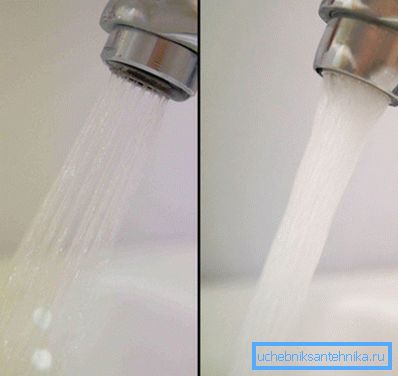
As for the choice between a simple aerator attachment and a sensor attachment, the main criterion is price. So, a high-quality nozzle-aerator will cost about 800 rubles, but the touch analog will cost about 3-4 times more expensive, but the functionality is much higher.
The sensor head is quite compact, the weight does not exceed 200 g. From the back there is a compartment for 4 batteries (standard finger-type batteries are used).
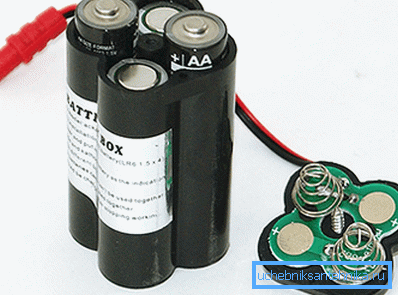
The principle of operation is similar to the touch mixer.
Of the features of the work can be identified:
- adjustable sensitivity of the sensor, the limits of its work lie in the range of 5-25 cm;
- on the case there is a button that is responsible for switching between automatic and manual mode. Manual mode disables the sensor and gives a constant pressure, while the automatic sensor monitors the position of the human hand.
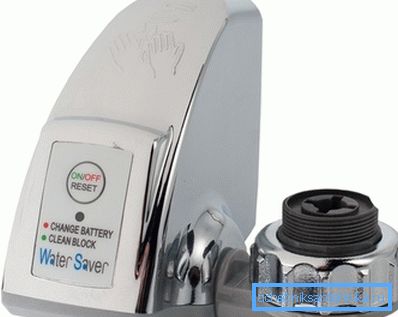
As for the installation, the instruction involves the installation of the nozzle instead of the mesh-aerator. The adapter comes with internal and external pipe threads for installation.
Installation must be performed in this order:
- first, the aerator mesh is removed from the tap;
- it is necessary to wear a fastening ring on it, it comes with the nozzle;
- then the adapter is screwed into the tap instead of the reticulum;
- on the worn ring is wound itself sensory nozzle.
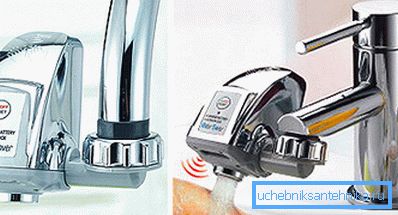
As for the simple nozzles (reducing consumption due to the geometry of the internal space), they are also installed on the faucet. They simply screw in instead of the usual mesh aerator. Depending on the design, they can provide water flow in the range of 2-8 l / min.
Summarizing
Touch taps are a great way to reduce water consumption and save on a communal flat. If there is no desire to change the taps in the house, then we can confine ourselves to special nozzles that are close in functionality to the touch mixers. In addition to saving water, it is also important that any person can cope with the installation; it is enough just to screw it into the tap instead of the net.
The video in this article shows an example of a kitchen faucet with a piezo element.